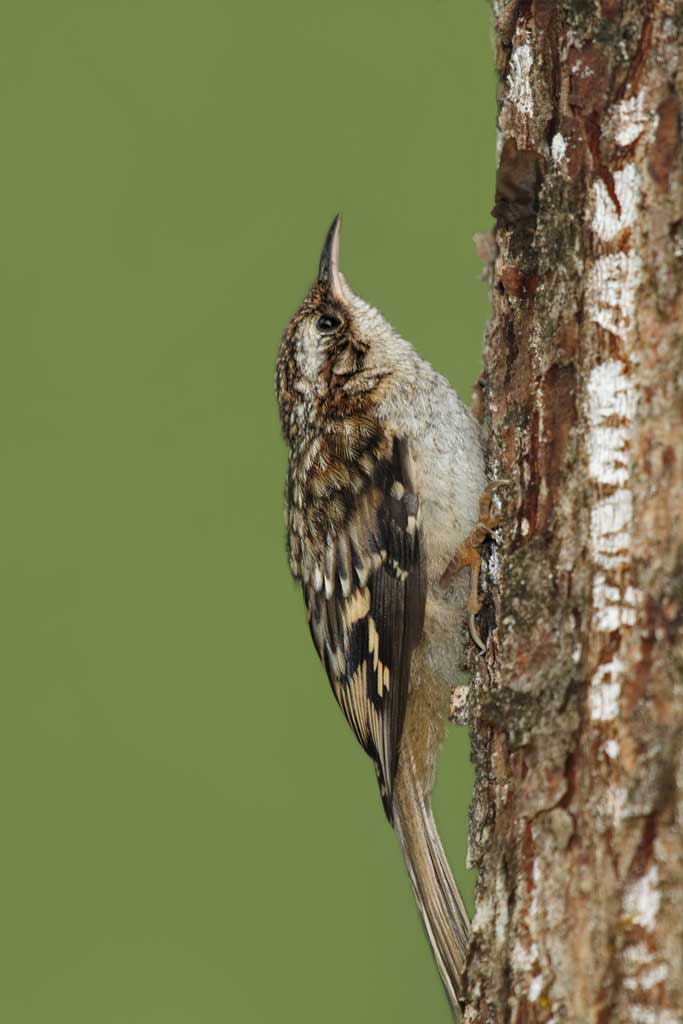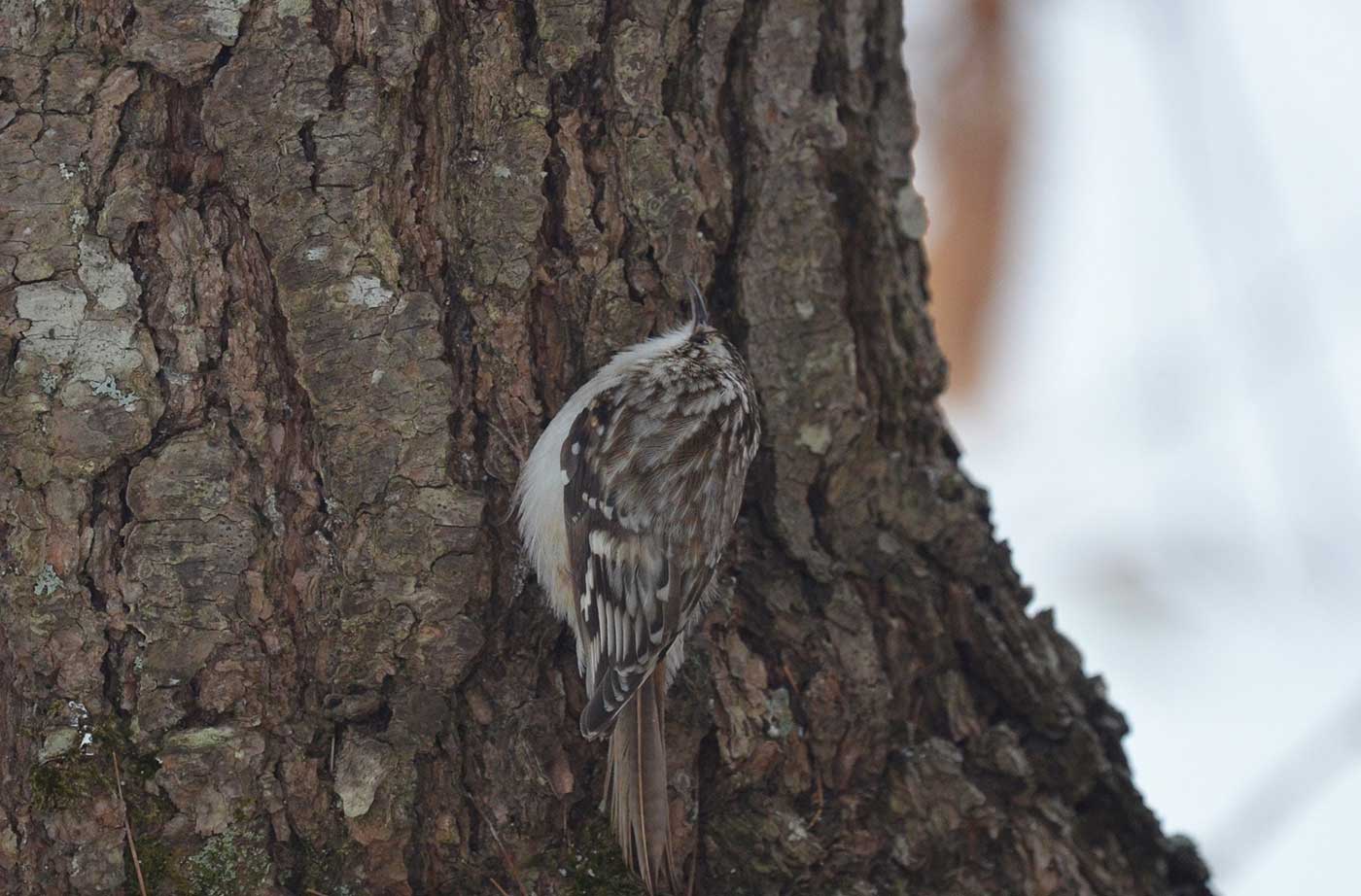
Brown Creepers spend their lives hitching up (never down) the trunks of trees. (Photo by Alan Vernon, CC BY 2.0 <https://creativecommons.org/licenses/by/2.0>, via Wikimedia Commons)
We have been fascinated with Brown Creepers from our earliest birding days. That’s a really long time! By “long time,” we mean back to junior high school days, where Allison caught her first glimpse of this mysterious tree-hugging bird along the forested edges of the Winthrop dump (ya, the foreground was not very scenic!); Jeff saw his “life Brown Creeper” at a pine grove on his grandparents’ property in North Edgecomb. Of course, as youngsters—and like many people who see this species for the first time—we didn’t know what the bird was, only that it looked unlike so many others we’d seen, with its rather long(ish), flattened appearance, scootching up—always up—the tree trunk. Our trusty Peterson field guide revealed them as Brown Creepers. We still consider them pretty cool birds. (Watch and listen to this video of a Brown Creeper.)
This winter, on our walks around the neighborhood with our dog Loki, we have repeatedly found a Brown Creeper. More often than not, we’re initially clued in to the bird’s presence by its rough, high-pitched “sree” call, so light and ethereal that it can be easily missed.
Brown Creepers are birds of the forest. We live in a residential area, so we have become especially enamored by this bird. It stays in a remarkably small area comprising the yards of about 5 or 6 houses along a stretch of 200 yards or so of city streets. Although some Brown Creepers do come to feeders (especially for suet), those feeding stations are typically close to a decent-sized forest. The area where we are seeing and hearing “our” Brown Creeper is not adjacent to anything that could be called a forest; the closest is mile or so away.
Given how this bird is going against type, you may wonder why Brown Creepers are so closely associated with forests. The first clue is their bodies, which are designed efficiently for a particular lifestyle: hitching up trees. They have long, stiff tails, like woodpeckers, with short legs and long toes that make it easy for scooching and grasping close to the surface of the tree. Unlike woodpeckers, creepers do not pound holes into trees but instead use their slender, curved bill to delicately pick and probe in the recesses of the bark for insects, spiders, and their eggs. They poke about as they hop up the main trunk of the tree, pressing their tail against the surface to stabilize themselves. Thus, a Brown Creeper’s day is typically a series of trips that start at the bottom of a tree trunk and end at the top. When it reaches the top of one tree, it plunges down to the base of another nearby and starts hitching up the trunk of that one.
 As you might imagine, old trees with lots of nooks and crannies in the bark tend to host more insects and spiders, which is why creepers are most likely to be found in forests with lots of big, mature trees.
As you might imagine, old trees with lots of nooks and crannies in the bark tend to host more insects and spiders, which is why creepers are most likely to be found in forests with lots of big, mature trees.
The little section of neighborhood where our Brown Creeper is hanging out happens to have a good number of large, old spruce trees and many active bird feeding stations that include suet. So while there is no forest nearby, the old trees combined with the offerings of the suet feeders provide enough food for this particular creeper to survive and want to stay put, much to our great pleasure.
Brown Creepers occur from Canada south into the Central American highlands to Nicaragua. Although Brown Creeper is the only species of creeper found in the Americas, there are 10 other creeper species currently recognized around the world (8 in the most closely related treecreeper genus). Most are found in Asia and Europe. Creepers are thought to be most closely related to some of our other favorite birds: nuthatches, wrens, and gnatcatchers.
Population trends for Brown Creepers in most of the U.S. and Canada appear positive, but the species is difficult to monitor because it occurs in low densities and can be hard to detect. Therefore, there’s some concern that trend estimates may not be entirely reliable.
Brown Creepers are regularly documented throughout the forests of Maine. But, finding them may take a little extra awareness. We hope you’ll tune in!
— Jeff and Allison Wells










Leave a Reply